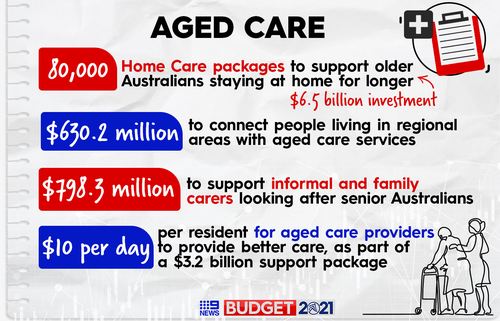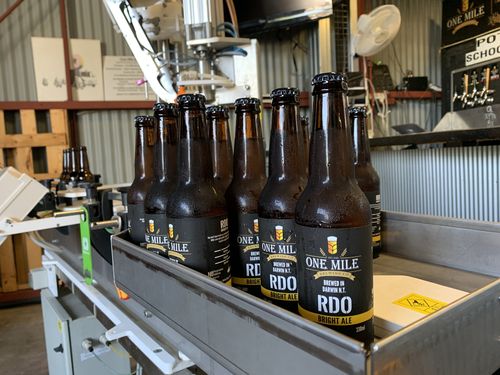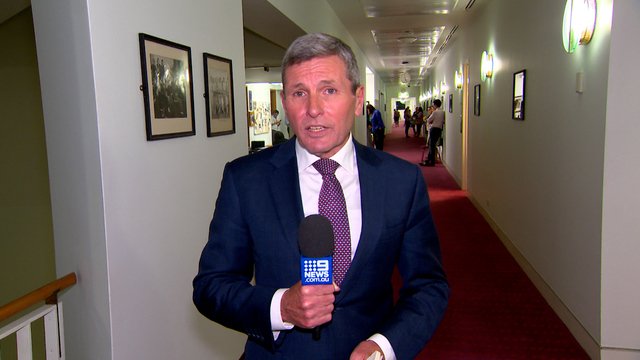Federal Budget 2021 Winners and Losers Who gains the most from surprise cash splash
It’s the cash splash almost none of us expected after the sheer expense of battling COVID-19.
After staving off the worst of the pandemic and defying economic estimates that more than 15 per cent of working Aussies would be without a job, the government is in a $53 billion better position than it thought it would be.
Combine that with a looming federal election, a jump in income tax revenue and soaring iron ore prices and you have the perfect recipe for a Budget that aims to please many.
Here’s a full breakdown of the 2021 Budget’s winners and losers:
WINNERS
Low- and middle-income earners
Do you earn less than $126,000 a year? If you do, you’re a winner in this Budget after government announced it was extending its low- and middle-income tax offset for another year.
In simple terms, you’ll receive a fatter tax return when you lodge your tax later this year, with the maximum “cashback” rate of $1080 for individuals.
How much you receive back depends on how much you earn, but the initiative will cost the government $7.8 billion and will impact around 10.2 million Australians.

Apprentices and tradies
Thinking about getting a trade? You’re in luck, because this Budget will fund an additional 170,000 new apprenticeships and traineeships, as well as 163,000 new training places to help employed people upskill.
If you’re already in a trade and worried about getting the work, the government has continued its eye-watering 10-year, $110 billion spend on infrastructure.
In tonight’s Budget alone $15.2 billion was named for rail and road upgrades – each of which are massive projects requiring hundreds of labourers, engineers, skilled trades and more.

Working families
Aussie families who are choosing to keep one parent at home because the cost of childcare is so expensive are set to be big winners of tonight’s Budget.
To cut living costs, the government will spend $1.7 billion by increasing child care subsidies available to families who have more than one child under five in childcare, and they’ll remove the $10,650 cap on the Child Care Subsidy.
This will impact around 250,000 families and will make it possible for around 40,000 individuals to pick up an extra day at work.
First home buyers
The government has committed to an extra 10,000 places for the First Home Loan Deposit scheme, which will see first home buyers only having to stump up a five per cent deposit to secure a property.
If you’re an eligible single parent, that could drop as low as two per cent.
There is a catch though – you will eventually have to pay that back over the course of your loan.
Senior Australians
It’s been a labelled a “once in a generation” spend on aged care, and Australia’s aging population is set to benefit from a huge $17.7 billion, five-year spend on improving care.
The particulars of this spending package are vast and complex, but on a broad scale it will improve living conditions in aged care facilities, enable older Australians to stay at home for longer and will boost the training and number of care workers.
Aside from aged care, Australians seniors are set to benefit from a reduction of the downsizer superannuation contribution.
From July 1, 2022, Aussies as young as 60 will be allowed maximum post-tax contributions of up $300,000 per person when they sell their homes.

Women
After being lashed last year for failing to recognise the economic factors weighing on Australian women, this year’s Budget included for the first time a separate “Women’s Budget Statement”.
In it the government pledged $3.4 billion towards protecting women from domestic violence, boosting economic opportunities for women and reducing the gender pay gap.
Of that, $1.1 billion will be spent on improving women’s safety (such as cash payments to help domestic violence victims pay for costs of living) and $1.9 billion to support economic security (such as more female places in STEM qualifications and childcare expenditure).
Medical inventors
Okay, medical inventors is pretty niche.
But from July 1 next year, Aussie companies that create medical or biotech products and patent them will be taxed at the very low rate of 17 per cent.
Called a “patent box”, the initiative is designed to inspire Aussie inventors to come up with the next bionic ear (the Cochlear implant is an Aussie invention) or cervical cancer vaccine (also Australian).
Normally these companies are taxed at the rate of 30 per cent.
Migraine sufferers
Sufferers of chronic migraines – a debilitating condition that overwhelmingly affects women, has no known cure and contributes to thousands of sick days – are set to benefit after the government announced it will be listing the drug Emgality on the PBS.
Instead of costing $6800 per year for treatment it will now cost $41.30 a script or $6.60 for concession card holders.
The Matildas
The Australian women’s football team was specifically mentioned in tonight’s Budget, with the government pledging $17 million to support a number of world class women’s sporting events including the FIBA Women’s World Cup for basketball and the Women’s FIFA World Cup.
Part of that $17 million spend will go towards eight additional international matches for the Matildas.

Game developers
Aussie game developers are set to benefit from a Digital Games Tax Offset that will see production houses receive a 30 per cent refundable tax offset for expenditure from July 1, 2022.
The government has said it wants to help Australians to take their slice of the $250 billion global video game market.
Microbreweries
Microbreweries and trendy small-scale distilleries are winners from the Budget, with the government pledging a massive cash-back scheme for every $350,000 worth of alcohol they ship out of local warehouses.
Under the program, eligible brewers and distillers will receive full remission of any excise they pay on alcohol up to a cap of $350,000 every financial year.
The move will primarily benefit small, locally run operations.

Zoos and aquariums
Heavily impacted by the lack of international tourism, the government’s $94.6 million Zoos and Aquariums program will be extended by six months to maintain animal populations where tourism revenue has been affected.
Robot overlords
That’s right, even our impending robotic masters were winners in tonight’s Budget with the government announcing a $117.8 million spend over the next four years into artificial intelligence, or AI.
Under the package, Australia’s first Artificial Intelligence Action Plan will be created, which will see the development of world-leading AI projects.
LOSERS
International travellers
Keen globetrotters who had their hearts pinned on finding the government’s plan for opening our international borders were disappointed by tonight’s estimates, with only an underlying assumption of some spending that borders will open some time in 2022.
Treasury did not lay out a rough timeline of when it expected international borders to open, only that containing COVID-19 outbreaks will be a “key factor” in the timing of opening borders.
The tourism industry
Much of the spending listed in tonight’s Budget – including the $1.2 billion tourism package – was already known and has already been initiated, such as the government’s half-price airfares offer on 800,000 tickets.
Sadly, the spending in tonight’s Budget is nowhere near enough to cover the losses felt by tourism operators and airlines alike for having closed international borders.

The Australian taxpayer (eventually)
The 2021 Budget delivered extremely positive news – Australia escaped the brunt of COVID far better than the economists predicted – but we are still in debt.
In 2021-22, the underlying cash balance is expected to be a deficit of $106.6 billion.
In a decade’s time, Treasury estimates we will still be in a deficit to the tune of 1.3 per cent of GDP in 2031-32.
By 2023-24, Treasury estimates that Australia’s net debt will be just shy of a trillion dollars at $920 billion.
Eventually, the taxpayer will foot the bill for government expenditure.








